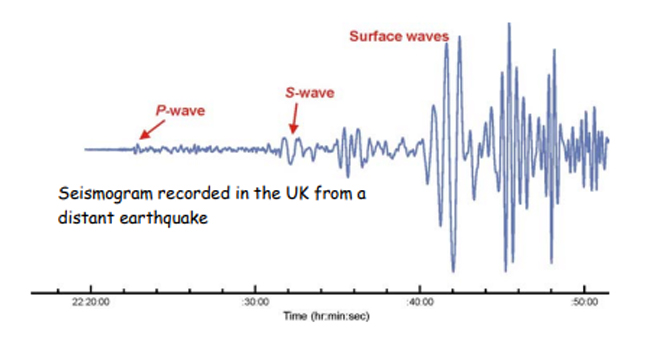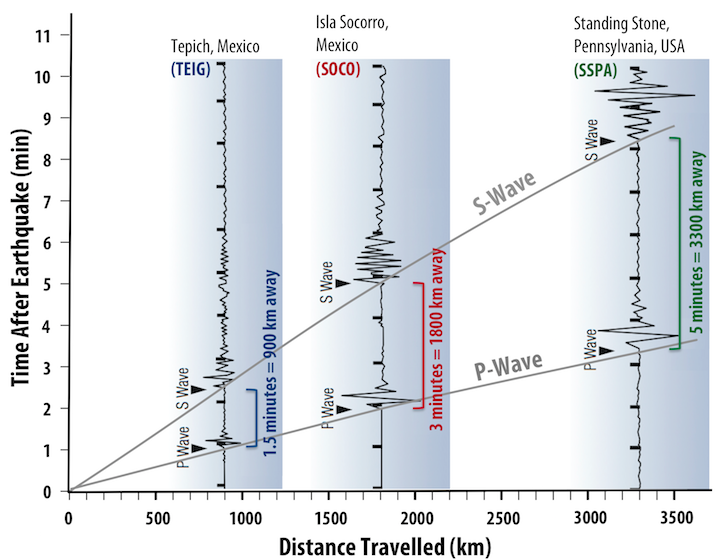Identify Two Ways in Which Geologists Use Seismographic Data
What are three ways in which geologists use seismographic data. A customer host and a server running various operating equipment can effectively exchange data Internet accessibility can be managed by a single ISP in each market.

How Are Earthquakes Detected British Geological Survey
They map faults detect changes along faults and develop a method of predicting earthquakes.

. How do geologists use seismographic data to make maps of faults. And also 3 the bottom section. What are three ways in which geologists use seismographic data.
That vibration pushes the adjoining piece of ground and causes it to vibrate and thus the energy. Earthquakes are recorded by a seismographic network. The travel velocity of these two wave types is not the same P-waves are faster than S-waves.
2 the center section lists PDU information for the frame selected in the top component of the screen and separates a caught PDU structure by its protocol layers. The maps show that earthquakes often occur along plate boundaries. Seismographs can tell the distance of an earthquakes epicenter from their location.
Geologists use seismographic data to map faults monitor changes along faults and to try to predict earthquakes. The epicenter of an earthquake is located at the same place as the seismograph. The Richter scale and the Mercalli scale.
From past seismographic data geologists have created maps of where earthquakes occur around the world. A seismometer is the internal part of the seismograph which may be a pendulum or a mass mounted on a spring. What does the data from seismographs tell geologists when making maps of faults.
1 The top section displays the perform of PDU frames caught with a an overview of the IP packet info listed. You can search for data from an earthquake using a. Identify features resulting from deposition by wind.
Wireshark data is presented in three sections. The Incorporated Research Institutions for Seismology or IRIS provides a data center with thousands of seismic stations. Geologists use seismic waves to locate the center of an earthquake.
Identify where Earths volcanic regions are located and explain why they are found there. There are two primary scales used to measure earthquakes. Explain how hot spot volcanoes form.
What is an benefit of network tools using open standard protocols. Identify features that result from deposition by waves. Explain how seismographic data are used.
Identify the two kinds of glaciers. Geologists use data from two data stations to determine the location of an earthquake. Identify what gives ocean waves their energy.
Mapping faults monitoring changes along faults and trying to predict earthquakes. Provide suggestions to increase earthquake safety and reduce earthquake damage. Identify the kinds of damage an earthquake can cause.
Three ways that geologists use seismographic data is to map faults monitor the changes along faults and to try to predict earthquakes. They are installed in the ground throughout the world and operated as part of a. How do geologists use seismographic data to make maps of faults.
Each seismic station in the network measures the movement of the ground at that site. What is the name of the scale that scientists prefer to measure earthquakes. Therefore the pen stays in place and the records the drums vibrations.
This activity allows students to identify rocks from actual specimens using a simplified key to the igneous sedimentary and metamorphic forms. Geologists use data from three or more data stations to determine the location of the epicenter. Wind Explain how wind causes erosion.
Seismographs detect seismic waves and use this data to study the length and depth of the waves. Explain how geologists determine earthquake risk. Seismic waves cause a seismographs drum to vibrate.
Seismographs are instruments used to record the motion of the ground during an earthquake. Goes only through solid - not through liquid. A seismograph records a strong earthquake and a weak earthquake.
Waves Describe how ocean waves erode a coast. A Trip Through Geologic Time Fossils Describe several processes of fossil formation. Sometimes its hard to detect faults because they are often covered with soil or rock but when seismic waves hit faults they bounce back getting recorded on seismographs.
In this way geologists can determine the location of the fault and mark it as an earthquake risk area. This gives you a circular path at that distance where the earthquake could be imagine taking a compass. What are three ways geologists use seismographic data.
However it is often used synonymously with seismograph. Goes through liquid and solid and S-waves shear or secondary. Geologists use seismographic data to map faults to monitor changes along faults and to predict earthquakes.
The two principal types of seismic waves are P-waves pressure. The Seismographs in Schools program is a great place to start. Network communications is confined to data transfers in between devices indigenous the very same vendor.
The slip of one block of rock over another in an earthquake releases energy that makes the ground vibrate. Using the Science Centers variety of samples our geologist will relate the many beautiful rock forms to the geologic forces that shaped them. But the suspended weight with the pen attached moves very little.
Geologists use these records to establish the structure of Earths interior.

12 2 Measuring Earthquakes Physical Geology First University Of Saskatchewan Edition

Seismic Survey An Overview Sciencedirect Topics

Glad You Asked What Are Seismic Surveys Utah Geological Survey
0 Response to "Identify Two Ways in Which Geologists Use Seismographic Data"
Post a Comment